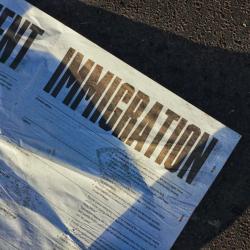How to Prove Liability in Rear-End Collisions
Many rear-end crashes happen on the road and often lead to arguments about who is to blame for the crash. Those involved must understand how to establish responsibility in these types of accidents. Through evidence and some principles, fault can be effectively determined. This article will discuss how to demonstrate liability in these types of incidents while focusing on key information and tips for obtaining a win.
A Primer to Rear-End Collisions
A rear-end collision is when one vehicle crashes into the back of another. These crash incidents mainly occur at intersections, but they could happen in heavy traffic conditions as well. Although your first instinct is to think that the driver behind you is in the wrong, this isn't always the case. Liability could depend on things like the weather, obstructions in the road, or an emergency stop. Speak to a Suzuki Law car accident lawyer to determine liability and fault.
Gathering Evidence
Gathering Evidence is Essential to Proving Liability. Photographs of the scene showing how the vehicles remained positioned and what damage occurred can also provide insight. Recording the skid marks, road signs, and traffic lights helps in the reconstruction of the event. Receiving witness statements also adds an outside view of an event, which may help decide responsibility.
Utilizing Police Reports
Police reports are an official source of information. Officers record what they observe, where vehicles are positioned, whether the weather conditions were legally violated, and what was going on. It frequently contains quotes from those involved and witnesses and provides a broad overview of events. These are very useful in enhancing a case when needing to establish fault.
Role of Traffic Laws
Knowledge of traffic law helps determine faults. For example, regulations define the tasks of the drivers — such as the distance necessary to be maintained when driving. Negligence can be shown through violations of these laws, such as following too closely to the car ahead or speeding. If there are case editions that publicize exemplary information, such as which guidelines are being made, it fits well with showing how a driver broke these types of guidelines, which fortifies the case against a driver being responsible for the accident.
Leveraging Expert Testimony
Expert testimony by accident reconstruction is vital. These experts review the evidence and give a thorough description of the event. They can clarify confusing elements, like acceleration and force of impact. A formal opinion from an expert professional can bolster your argument to prove fault.
Exploring Contributing Factors
If mechanical failures or adverse weather occur, these contributory factors will also play a role in determining liability. A trailing driver may not be set to blame if, for example, the brakes of a car at the head of the pack suddenly fail. Recognizing these factors allows for proper evaluation of the actions of either party involved. Closely looking at all aspects ensures that the incident is viewed from every angle.
Insurance Adjuster's Role
This is because insurance adjusters have a significant hand in determining liability. The work examines the evidence–photos, police reports, witness statements–to create their ratings. Learning how insurers process claims provides insight into how the liability may be apportioned. Having details on these procedures will help you navigate the claims process smoothly.
Documenting Medical Records
Medical records are key evidence in liability cases. A correlation can often be made between the severity of the accident and the documented injuries. Furthermore, the force and direction of the impact may be recorded in medical records. These records embody tangible effects of the crash, supporting claims.
Navigating Legal Assistance
Legal help is vital in rear-end accidents with complicated cases. Traffic accident attorneys specialize in collecting evidence and dealing with insurance companies. They can also represent their clients in court. They understand traffic laws, know how to prove liability, and are experienced in handling similar cases.
Avoiding Common Pitfalls
Steering clear of these frequent traps builds a better case for liability. Gathering insufficient evidence or not obtaining witness statements can undermine the argument. Moreover, failing to take contributory factors into account may result in an overly basic assessment of the incident. These mistakes can be avoided by being thorough and detailed, which leads to stronger liability claims.
Conclusion
Liability in rear-end collisions is proven differently and needs to be proven comprehensively. It involves knowing how these accidents happen and having solid evidence and expert testimony, which can lead to successful liability. Complete accounting, a grasp of traffic rules, and the assistance of a lawyer only improve the chances of establishing your culpability. With this knowledge in hand, minor rear-end collision victims can maneuver the confusion of liability and instead end up with a fair and just recovery.
More to Read:
Previous Posts:
Next Posts:



